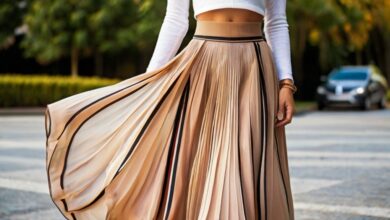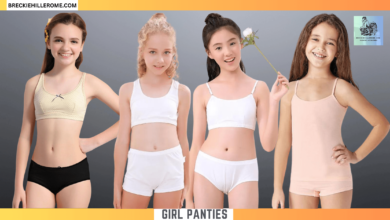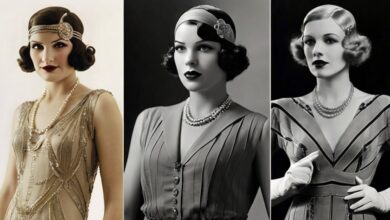1980s Men’s Hair Fashion Bold innovation and dramatic trends characterized 1980s fashion, especially men’s haircuts. Men’s hair fashion reflected the decade’s societal transformations as hair became an important form of self-expression. The origins, cultural relevance, and celebrities who popularized 1980s haircuts are examined in this article.
The Cultural Context of 1980s Men’s Hair Fashion
Understanding 1980s hairstyles requires understanding the decade’s culture and society. Rebellion against conservative beliefs characterized the 1980s. This period saw individualism, materialism, and pop culture boom. Music, movies, and TV influenced hairstyles and fashion.
The 1981-founded MTV has had a huge impact. The channel took music videos to American homes, making singers’ looks as essential as their music. Hairstyles became more important to musicians’ images due to this visual emphasis. David Bowie, Prince, and Michael Jackson created styles that admirers enthusiastically emulated.
The 1980s also witnessed the rise of subcultures with different styles. Each group had its hairstyle, from punk rockers to new wavers to glam metal fans. The 1980s saw a variety of men’s haircuts thanks to these subcultures.
Iconic Hairstyles of the 1980s
The Mullet
Perhaps the most iconic ’80s hairdo is the mullet. The mullet, with its short front and sides and extended back, symbolized the decade’s bold style. The “business in the front, party in the back” appearance was practical and rebellious, making it popular among many guys.
Billy Ray Cyrus and Wayne Gretzky popularized the mullet. Rock musicians, sportsmen, and regular guys wore the hairdo throughout cultures. The 1980s mullet remains a fashion icon despite later scorn.
The Pompadour
Rockabilly helped put the pompadour back in style in the 1980s. This 1950s hairdo, popularized by Elvis Presley, has voluminous, dramatic hair swept upwards and back.
In the 1980s, Morrissey from The Smiths and rockabilly band The Stray Cats revived the pompadour. Embracing theatricality and flamboyance, the new romantic movement helped revive the style. Style and attitude were expressed by the pompadour’s affiliation with various subcultures.
The Flat Top
Another 1980s haircut, especially among African Americans, is the flat top. The sides and back are chopped short, while the top is left longer and flat. The sleek, geometric style was elegant and functional.
Rappers like Will Smith from “The Fresh Prince of Bel-Air” and basketball player Kid ‘n Play popularized the flat top. The golden period of hip-hop’s ingenuity and invention was symbolized by this hairdo. The flat top’s sharp, angular shape fit the decade’s futuristic and avant-garde style.
Influence of Pop Culture on 1980s Men’s Hair Fashion
Music
The 1980s’ biggest effect on men’s hair fashion was music. MTV gave musicians a great platform to express their style, including haircuts. David Bowie, with his changeable hair, set trends. Bowie’s ability to alter himself with each record led admirers to experiment with their hair, resulting in many bold looks.
With his flamboyance and immaculate elegance, Prince also influenced men’s hair fashion. He defied men’s hair standards with his neatly coiffed curls and vivid colors. The glossy, curling Jheri curl was popularized by Michael Jackson, another decade star.
Movies and Television
Men’s 1980s hairstyle was also influenced by movies and TV. Hollywood stars including Tom Cruise, Patrick Swayze, and Harrison Ford had popular haircuts. Television stars popularised the “feathered” appearance, with layered, flowing hair.
Movies like “Top Gun” are influential. In the film, Tom Cruise’s haircut became the all-American, clean-cut appearance many men wanted. Television series like “Miami Vice” popularized the decade’s sleek, gelled hair.
Subcultures and Their Distinct Hairstyles
Punk Rock
Punk rock peaked in the early 1980s after starting in the late 1970s. Punkk musicians liked to rebel and were anti-establishment, including in dress. Bold cuts and bright colors defined punk haircuts.
Punk haircuts like the Mohawk, with its shaved sides and lengthy central strip, are legendary. Brightly colored hairstyles showed rebellion and uniqueness. The Sex Pistols and The Ramones inspired many young guys to wear punk haircuts.
New Wave
A response to punk rock’s raw, confrontational sound was a new wave. The dresses and hairstyles of new wave fans reflected its experimental and synthetic music. New wave haircuts were sleek, asymmetrical, and futurism-influenced.
New wave bands like Duran Duran and The Human League used slicked-back to spiky, angular haircuts. New-wave fashion emphasized asymmetry and geometric forms in hair, and many men chose bold, unorthodox haircuts that questioned masculinity.
Glam Metal
Another prominent 1980s subculture was glam metal or hair metal. This dramatic, over-the-top genre was typified by Mötley Crüe, Poison, and Bon Jovi. Volume and teased, backcombed hair-defined glam metal haircuts.
Glam metal hair requires hairspray and other styling chemicals to reach great heights. The era’s extravagance and flamboyance were reflected in these haircuts. Glam metal bands created a mainstream hairstyle that influenced males outside the music industry.
The Evolution and Legacy of 1980s Men’s Hair Fashion
The 1980s’ flamboyant, experimental, and nontraditional hairstyles reflected the decade’s culture. The mullet and Jheri curl faded out of fashion, while others endured.
Some 1980s haircuts are back in demand due to retro fashion. Fashion runways and mainstream media have included modern mullets, proving the decade’s most famous styles’ longevity.
The creativity and originality of 1980s hair fashion still influence modern looks. Modern men’s fashion emphasizes experimentation and boldness.
Conclusion
A variety of styles mirrored the 1980s Men’s Hair Fashion cultural energy and changed men’s hair trends. The 1980s’ hairstyles were as diverse as the decade, from the mullet to the pompadour and flat top. Music, film, and subcultures shaped these haircuts as symbols of individuality and revolt.
Many 1980s men’s hairstyles are still popular today. The 1980s’ flamboyant and creative haircuts inspire new generations, preserving the decade’s energy in men’s fashion.
In conclusion, men’s hair fashion became a key part of personal expression and cultural identity in the 1980s. The hairstyles of this era, whether praised or criticized, have left an everlasting impression on fashion history, reminding us that hair was a statement.
FAQs on 1980s Men’s Hair Fashion
What were the most popular men’s hairstyles in the 1980s?
Men’s hairstyles of the 1980s Men’s Hair Fashion included the mullet, flat top, Jheri curl, and high top fade. Other popular trends were spiked hair, mohawks, and voluminous hair.
How did the mullet become popular in the 1980s?
Versatility and celebrities like Billy Ray Cyrus and David Bowie popularized the mullet in the 1980s. The short front and long back haircut was practical and provocative.
What products were commonly used to style men’s hair in the 1980s?
Men utilized mousse, gel, and hairspray to produce 1980s Men’s Hair Fashion voluminous and structured hair. These goods maintained the decade’s strong styles.
Which celebrities influenced 1980s men’s hair fashion?
David Bowie, Rod Stewart, Bono, Tom Cruise, and Patrick Swayze impacted 1980s men’s hairstyle. Many guys copied their hairdo.
What was the significance of the jheri curl in 1980s men’s hair fashion?
Celebrities like Michael Jackson and Lionel Richie popularized the glossy, wavy jheri curl in 1980s men’s hair fashion. A chemical treatment generated soft, loose curls that required regular upkeep and particular ingredients.
How did punk culture influence men’s hairstyles in the 1980s?
Punk culture influenced 1980s Men’s Hair Fashion Men’s Hair Fashion men’s haircuts with mohawks, liberty spikes, and vividly colored hair. These trends expressed revolt and individualism with DIY haircuts and colorful hair colors.
What was the high-top fade, and why was it popular in the 1980s?
African American males favored the 1980s Men’s Hair Fashion high-top fade, a flat-topped cut with neatly shaved sides and back. It was popularized by hip-hop culture and Will Smith and Grace Jones.





